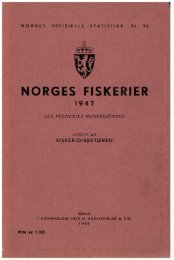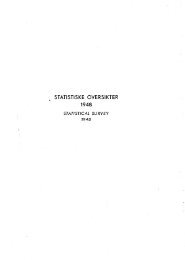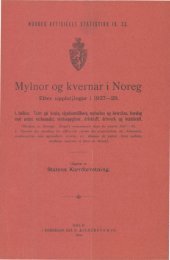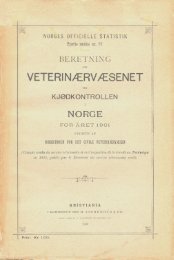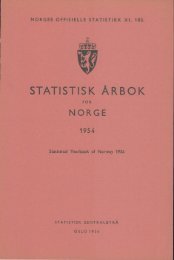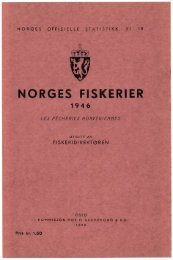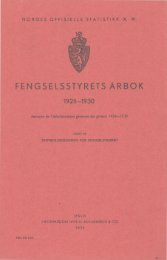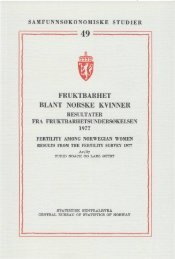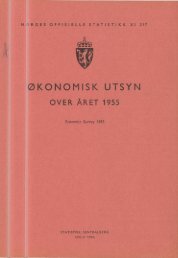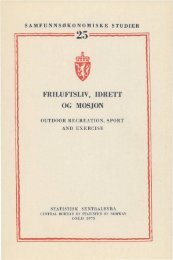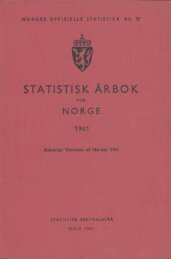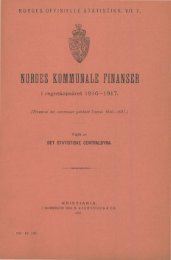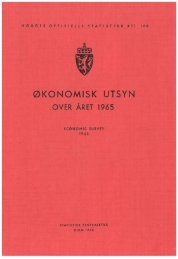Liquidity provision in the overnight foreign exchange market
Liquidity provision in the overnight foreign exchange market
Liquidity provision in the overnight foreign exchange market
You also want an ePaper? Increase the reach of your titles
YUMPU automatically turns print PDFs into web optimized ePapers that Google loves.
ency when <strong>the</strong> bond returns <strong>in</strong> Sweden <strong>in</strong>crease relative to German bond returns (return<br />
on ten-year bonds). For three-month <strong>in</strong>terest rates this relationship is much weaker. We<br />
also see that F<strong>in</strong>ancial customers tend to buy Swedish kroner when <strong>the</strong> return on <strong>the</strong><br />
Swedish stock <strong>market</strong> <strong>in</strong>creases relative to <strong>the</strong> world stock <strong>market</strong>, and <strong>in</strong> particular<br />
when <strong>the</strong> Swedish stock <strong>market</strong> return <strong>in</strong>creases. These stock <strong>market</strong>-FX correlations<br />
are well-known among FX dealers. For measures of <strong>in</strong>flation, current account and <strong>the</strong><br />
trade balance, <strong>the</strong>re are no significant correlations with flows of F<strong>in</strong>ancial customers.<br />
For Non-F<strong>in</strong>ancial customers we f<strong>in</strong>d a negative correlation between changes <strong>in</strong> relative<br />
bond returns and net flows. When <strong>the</strong> relative performance of <strong>the</strong> Swedish stock<br />
<strong>market</strong> <strong>in</strong>creases, Non-F<strong>in</strong>ancial customers tend to sell Swedish kroner. Interest<strong>in</strong>gly,<br />
we see that flows of Non-F<strong>in</strong>ancial customers are heavily correlated with <strong>the</strong> current<br />
account and trade balance. This suggests that, to some extent, <strong>the</strong>se customers can be<br />
characterized as “current account traders.” 6<br />
Table 2: Correlations between changes <strong>in</strong> net hold<strong>in</strong>gs of <strong>foreign</strong> currency and some<br />
macro variables at <strong>the</strong> quarterly horizon<br />
F<strong>in</strong>ancial Non-F<strong>in</strong>ancial Central<br />
customers customers Bank<br />
∆(RDIF10Y) 0.25 -0.13 -0.07<br />
∆(RDIF3M) 0.04 0.04 -0.21<br />
∆(STOCK DIF) -0.25 0.26 -0.25<br />
∆(STOCK SWE) -0.45 0.35 -0.10<br />
∆(CPI SWE-CPI GER) -0.04 0.05 -0.20<br />
Current account 0.01 -0.41 0.35<br />
Trade balance -0.05 -0.36 0.56<br />
Sample: 1.1993-6.2002. Change <strong>in</strong> variable is <strong>in</strong>dicated by “∆.” RDIF10Y is <strong>the</strong> difference between <strong>the</strong> yield to maturity for<br />
Swedish and German bonds with ten years to maturity. Similarly, RDIF3M is <strong>the</strong> difference between Swedish and German 3-month<br />
<strong>in</strong>terest rates. STOCKDIF is <strong>the</strong> difference between <strong>the</strong> return on Swedish and European (ex. Sweden) stock <strong>market</strong> <strong>in</strong>dexes, while<br />
STOCK SW E is <strong>the</strong> return on <strong>the</strong> Swedish stock <strong>market</strong> <strong>in</strong>dex. D(CPI SW E) − D(CPI GER) measures <strong>the</strong> difference between<br />
Swedish and Foreign <strong>in</strong>flation.<br />
While flows of F<strong>in</strong>ancial customers show no significant correlation with <strong>the</strong> cur-<br />
6 We do not mean that <strong>the</strong>ir trades are only related to <strong>the</strong> current account. For <strong>in</strong>stance, Non-F<strong>in</strong>ancial<br />
customers contribute to direct <strong>in</strong>vestments.<br />
13



